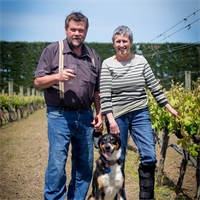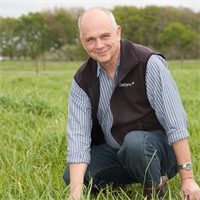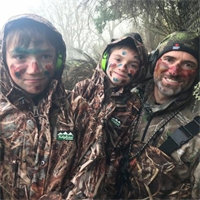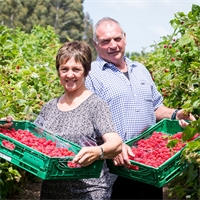02Dec
Turn over a new leaf
THIS PROMOTIONAL FEATURE WAS PROVIDED BY BARENBRUG.
Long before farm nutrient management came under scrutiny, one New Zealand pasture breeding company was routinely keeping all its up-and-coming ryegrass cultivars hungry for nitrogen.
What started as a pressure test for life on commercial farms – where the risk of soil nutrient deficiency is ever present – is now also an incubator for environmental gain. Array NEA2 diploid perennial ryegrass is the first of its type to come out of this programme, and Barenbrug Commercial Manager Graham Kerr says, it shows the power of pasture to lighten New Zealand’s farm footprint.
“On every farm, some animals naturally produce more or grow faster than their herd or flock mates, even though they are fed exactly the same.”
"Array NEA2 does the same in ryegrass terms – it grows more kilograms of dry matter per hectare, for the same amount of nitrogen. It’s an exciting development because Array NEA2 combines two attributes that seem incompatible,” Graham says.
“It’s the highest yielding perennial ryegrass we’ve ever bred, and it achieves this under the same inputs, in the same soils, as its peers. But it really stands out when there’s a significant nitrogen deficiency.”
Trials comparing the concentration of nitrogen in the leaves of diploid perennial cultivars grown under deliberate nitrogen deficiency showed no difference between Array NEA2 and others. “But Array NEA2 yielded significantly higher, meaning it is able to extract more nitrogen from the same soil,” Graham says.
Sowing it, is a new way to look after both your environment, and your productivity, and one that can be implemented straight away, with no disruption. All you have to do is get used to pastures that contain more feed than you probably expect. Graham says, “this comes down to Array NEA2’s physical characteristics, which in turn reflect two key breeding objectives – high animal intake and good persistence.”
“We wanted to make it as easy as possible for animals to eat, because taking thousands of bites every day is hard work, so it’s tall, with long leaves.
“And it has lots of tillers, because tiller density helps ryegrass persist. When we put it side by side with other perennials, you can see a definite difference; one person described it as looking a bit like a hedgehog!
“The continual feedback we’ve had from farmers is that there is more feed in the paddock when they go to graze it than they realise. Either it takes their animals a lot longer to finish a paddock of Array NEA2 than they expect, and/or it’s ready for grazing earlier.”
“As well as high overall yield, Array NEA2 also grows well during the cooler season, better than any other perennial ryegrass Barenbrug has bred,” Graham says.
“That helps fill the gap when feed is short and makes farms more resilient so you can adapt to shifting climatic patterns.”
Array NEA2 seed is available now; talk to your Ruralco Representative to find out more.
Related

In an industry dominated by large companies and big brands, Canterbury-based Straight 8 Estate winer...
Read More

Selecting a perennial ryegrass that both performs and persists under the pressures of our unique New...
Read More

Summer is just around the corner and with that comes the risk of facial eczema (FE).
Read More

For Ruralco member, keen lifelong hunter, and father of 10-year-old twins Hugo and Ralph, Tim Silva,...
Read More

What started out as a stepping stone has developed into a successful horticultural business for Mid ...
Read More

“Take care of your employees and they will take care of your business, it’s that simple....
Read More